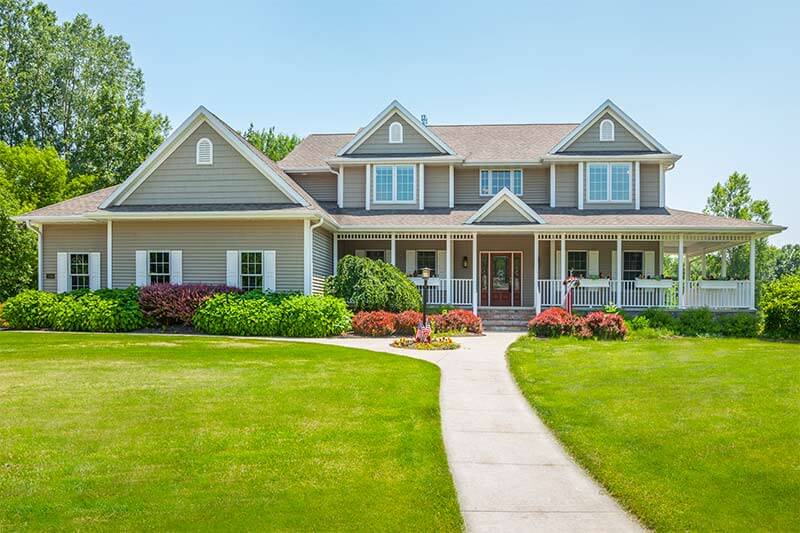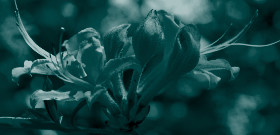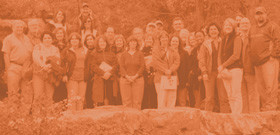The D&L Blog

They say there are dog people and cat people. Morning people and night people. Manicured-lawn people and gardens-gone-wild people. Okay, maybe they don’t say the last one, but there is a stark difference between lawns of crisp mowed grass accented by a sprinkling of ornamental plants, and yards or parks designed with habitats and intrigue in mind. Those differences are felt aesthetically and ecologically.
In this month’s Nature and Environment blog article we’ll briefly explore how today’s automatic notion of lawns as grass came to be, a local project bucking that trend in public space, and resources for replicating such efforts at home.

A (BRIEF) HISTORY OF THE AMERICAN LAWN
Excerpt from: The History of the American Lawn (pennington.com)
- 1806: U.S. President Thomas Jefferson, an avid horticulturist, among the first to replicate European lawn styling in America at his Monticello estate. Other wealthy U.S. landowners followed suit, but most Early American yards stayed devoted to vegetable and herb gardens, or grazing animals.
- 1868: First three American lawn mower patents were issued. These exclusive machines laid the way for today’s common turf tools, but mowers were still considered luxury items.
- 1871: The first lawn sprinkler was patented, complete with water pipes and rubber hoses, allowing homeowners to compensate for nature’s lack of rain.
- 1870s: Front yard produce gardens moved to the rear as maintained grasses took their place. New housing took cues from landscape trends in large-scale urban parks, using expansive lawns to separate homes from streets as suburban communities took form.
- 1888: New York became home to America’s first golf course and its pasture-like playing surface. The idea of refining turf grasses took off as golf’s U.S. popularity exploded and the number of golf courses soared. House-lined golf courses and golf course-like lawns became new American goals.
- 1950s and 1960s: American suburbs grew in population, and their neat lawns grew in popularity, but most grasses were best suited to golf courses or pastures.
As mentioned above, large-scale landscaping trends in parks inspired the design of residential yards. Perhaps that trend will continue, but with an upcoming park project instead inspiring a return to designing with habitat in mind.
Two partners in Lehigh Valley Greenways Conservation Landscape – Northampton County and Wildlands Conservancy – are partnering this fall to naturalize two of the County’s largest properties: Wayne A. Grube Memorial Park (200 acres) and Louise Moore Park (100 acres).
While both parks offer the typical amenities such as playgrounds and sports fields, they are limited on opportunities for visitors to connect with nature. The County has thus committed to naturalizing some of these areas, and reducing mowing. In total, Wildlands anticipates planting 200 trees to establish two acres of riparian habitat, installing 6,000 wildflower plugs and planting meadow seed to establish approximately 14 acres of pollinator and grassland habitat, restoring approximately 1.5 acres of wetland habitat and improving 1,000 linear feet of stream. These plantings in strategic areas will add color and landscape diversity for visitors, and ample habitat for native wildlife, while increasing floodwater absorption during storm events.
Native plants provide unmatched habitat value because native flora and fauna have coevolved for thousands of years.
If you’re interested in attracting birds, butterflies, and other forms of life to your yard, visit:
- HOMEGROWN NATIONAL PARK– is a grassroots call-to-action to regenerate biodiversity and ecosystem function by planting native plants and creating new ecological networks. Contains valuable resources, guides and an interactive map!
- Master Gardener Program — Penn State Extension (psu.edu) – Training and volunteer opportunity.
- Certify your Garden for Wildlife through National Wildlife Confederation at: Certify (nwf.org)
Written by Brit Kondravy, D&L Conservation Coordinator










